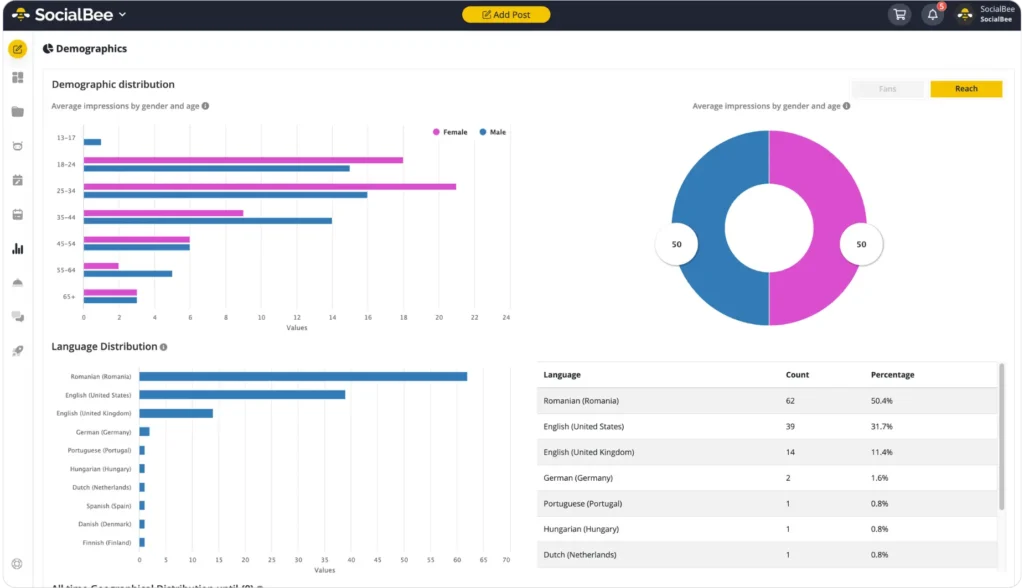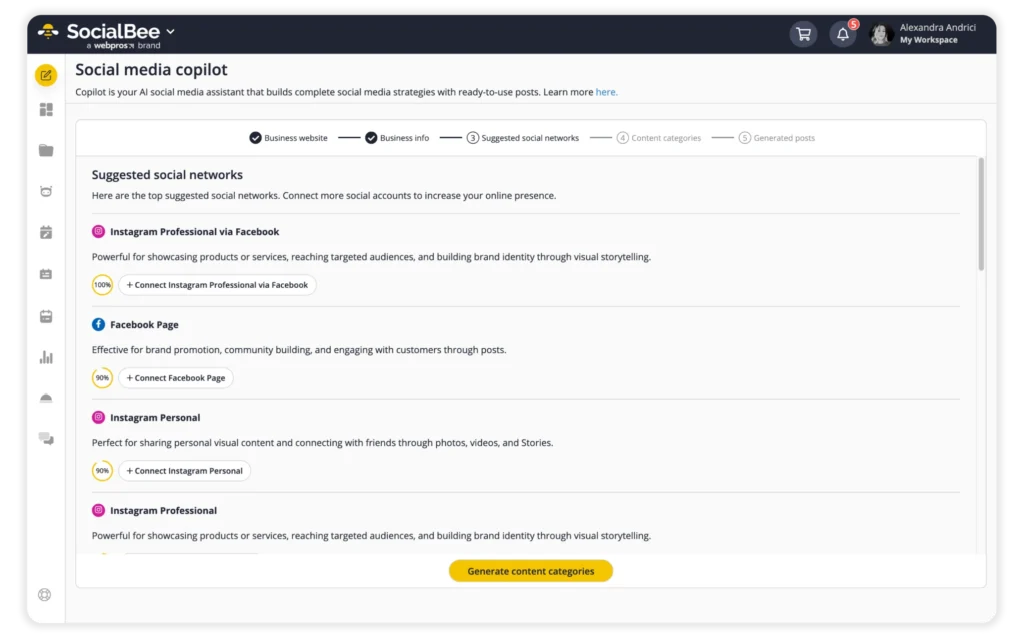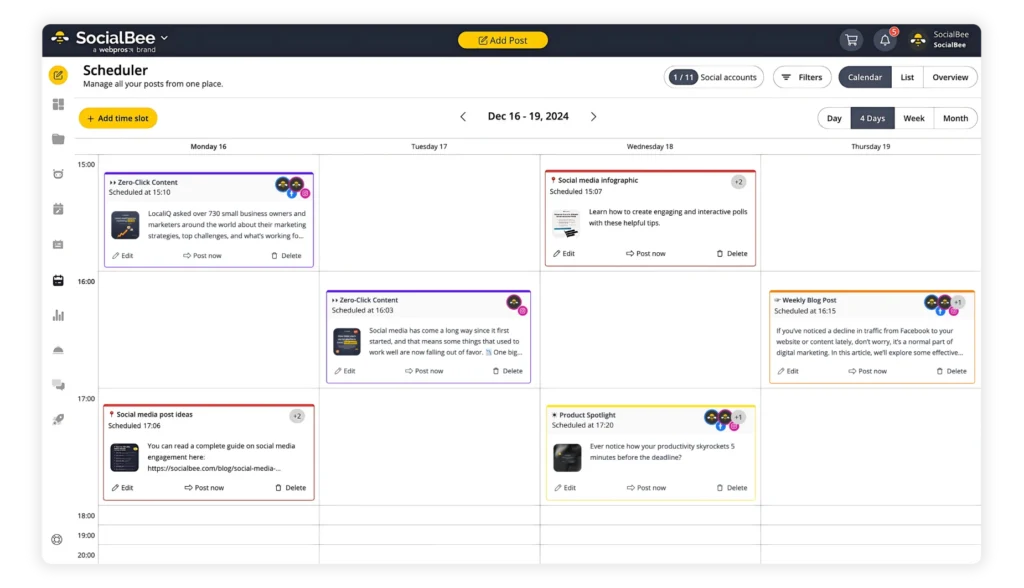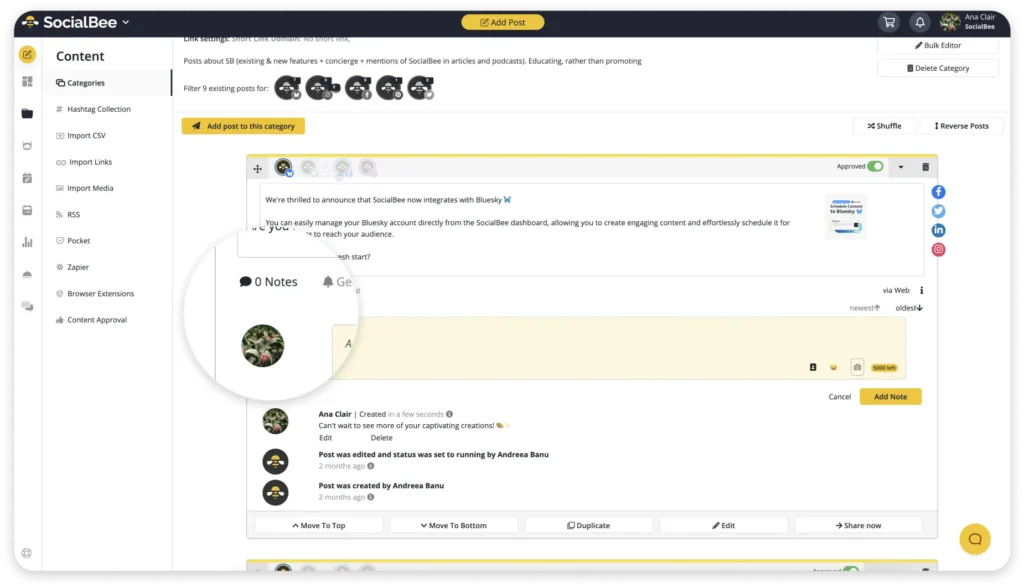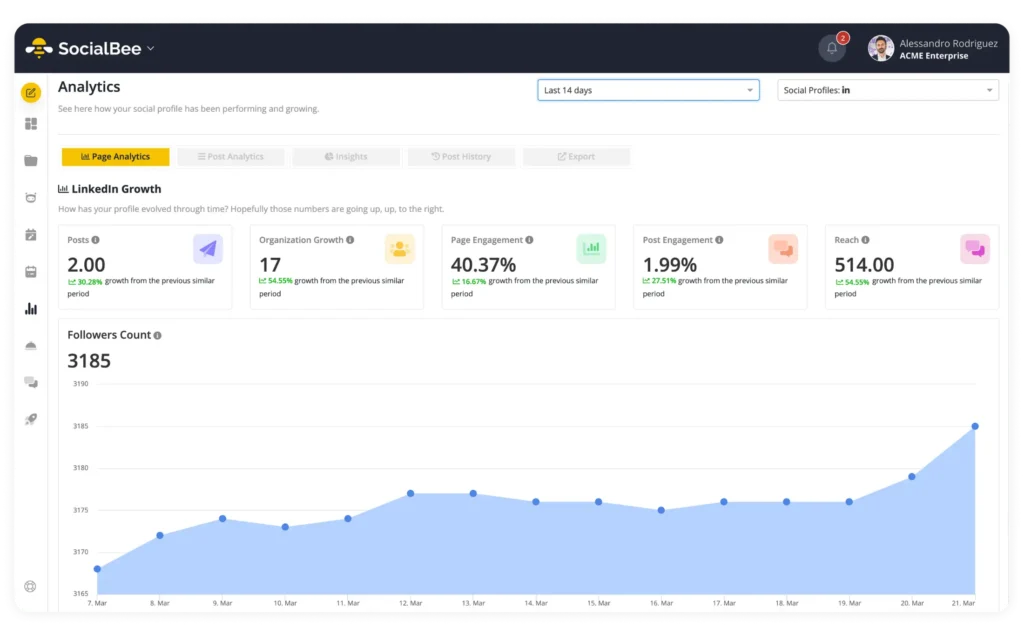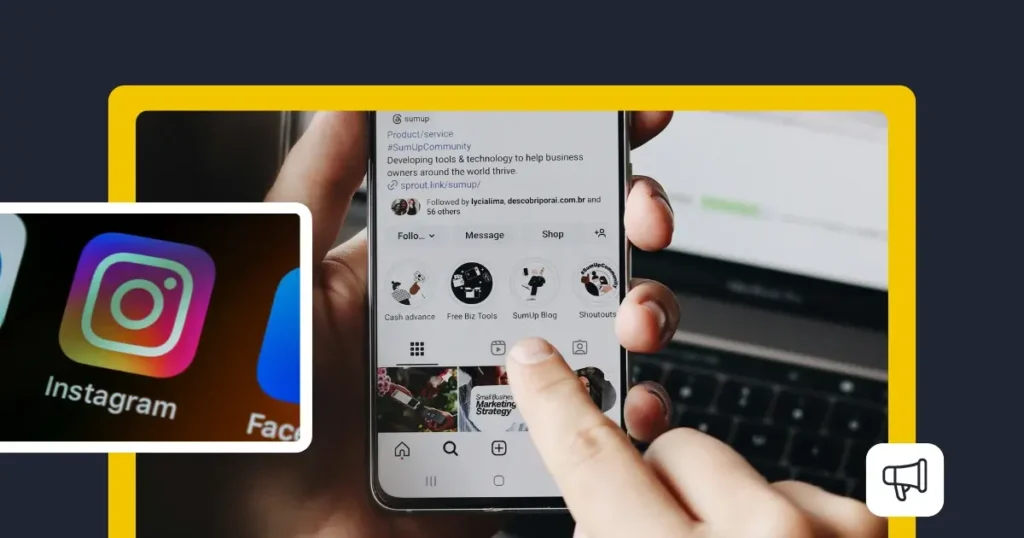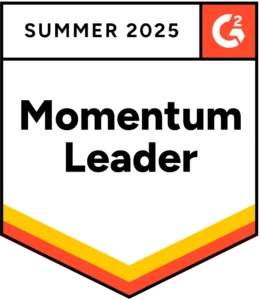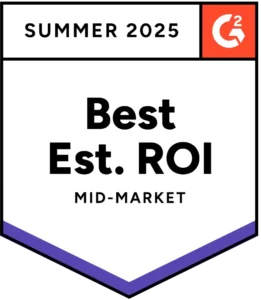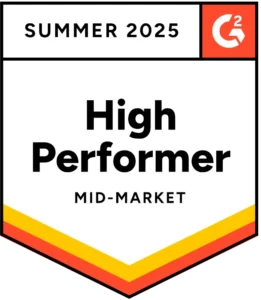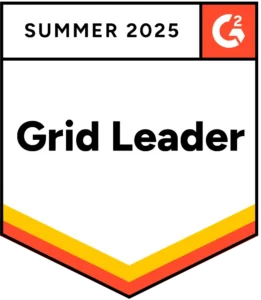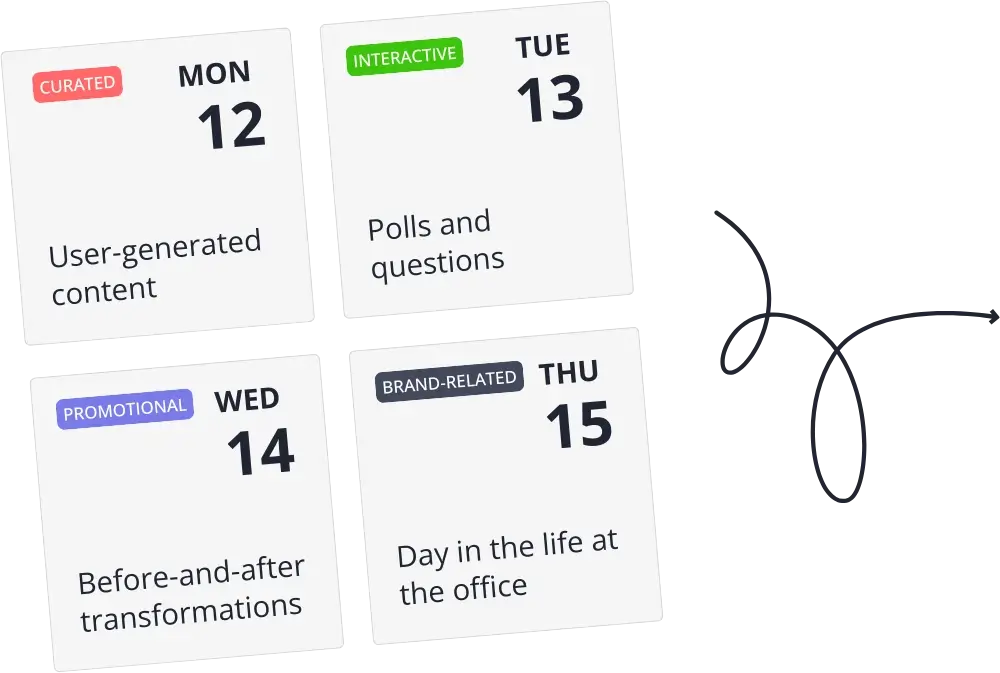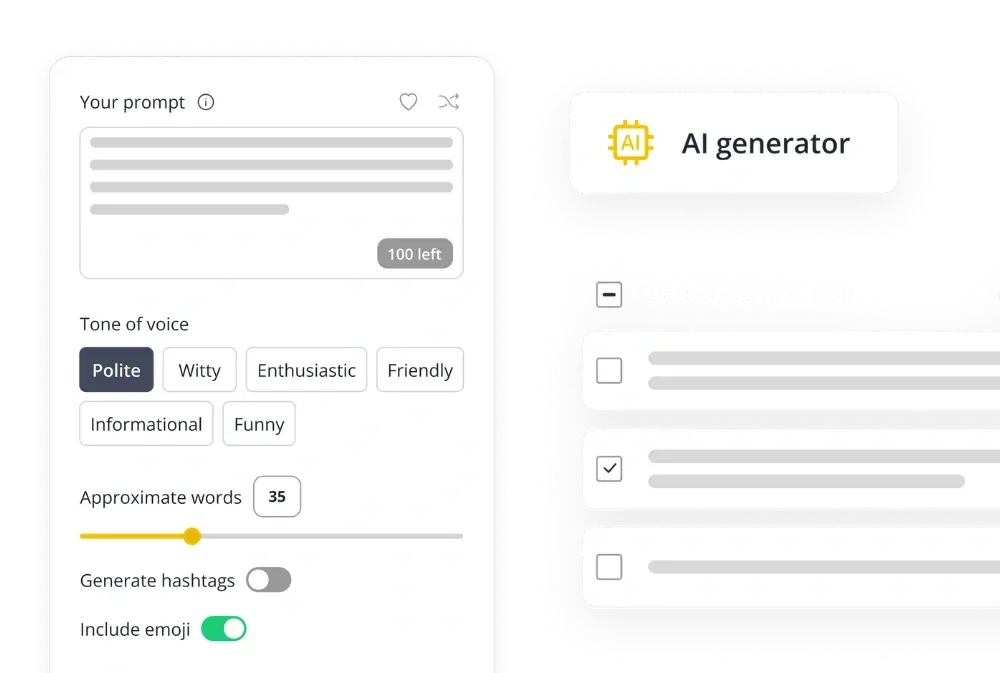
Content Writer at SocialBee
Is your social media posting schedule not delivering the results you’d hoped for? Because let’s face it: when it comes to building an online presence, the timing and frequency of your posts can greatly influence engagement and visibility.
However, many businesses need help determining the optimal posting times, ensuring a consistent content stream, and adapting to the unique demands of different platforms.
But fear not because, in the following sections, we will delve into how to make smarter scheduling decisions, maintain consistency without overwhelming your audience, and tailor your social media strategy to various social media channels. Shall we get started?
Short Summary
- Social media scheduling is the process of planning and arranging when to post content on various social media platforms.
- Use social media analytics to determine where the majority of your audience is located and schedule posts to match these time zones. If your audience is global, consider rotating your post times to effectively reach different regions.
- Tailor your social media posts, timing, and frequency to the specific demographics and preferences of each platform.
- Develop content themes to keep the social media feeds dynamic and engaging. Rotate through educational, inspirational, promotional, and interactive posts to keep content fresh.
- Organize content posting and scheduling to align with overall business goals and ensure consistent engagement.
- Regularly analyze performance metrics to refine and optimize the posting schedule and content strategy.
What Is Social Media Scheduling?
Social media scheduling is the process of creating and planning when to post content on various social media platforms.
It involves choosing the best times to share posts to maximize engagement from your target audience, which can vary depending on platform specifics, audience demographics, and online activity patterns.
Why Should You Schedule Your Social Media Content?
Did you know that social media managers can use social media planning and scheduling to increase profits by at least 8%? And that’s not all.
Here’s why you need to schedule your social media content:
- Manage time better: When you batch the creation and scheduling of content, you have more time to focus on tasks like strategy development, engagement, and analytics. This reduces daily pressure and prevents last-minute rushes to publish content.
- Maintain a consistent posting schedule: To build a loyal audience, your social media feeds must be active, even during busy times. Scheduling social media posts keeps your brand top of mind for consumers, helping establish a reliable online presence.
- Create social media campaigns in advance: For social media campaigns related to events, product launches, or holidays, scheduling posts in advance ensures that all your promotional material goes live at the right moment, maximizing its impact and reach.
- Post at peak engagement times: Every social media platform has specific time windows when users are most active. Using social media management tools to schedule your posts accordingly increases the likelihood of engagement, likes, shares, and comments.
- Expand your social media presence across time zones: If your audience spans multiple time zones, scheduling content enables you to adapt to diverse geographic regions without being online 24/7. This makes all segments of your audience feel valued and catered to, regardless of location.
How to Fix Your Social Media Posting Schedule in 5 Steps
Do you want to make the most out of your social media posts? It might be time to reassess and revamp your posting schedule.
Here’s how to fix your social media posting schedule in five steps:
- Identify when your audience is most active on social media
- Create a social media posting strategy for each channel
- Create a diverse and fresh content mix
- Create a social media calendar
- Monitor performance and iterate
1. Identify When Your Audience Is Active on Social Media
When looking to optimize your social media posting schedule, begin by identifying when your audience is most active online. To do this, most social media platforms provide valuable insights into your followers’ behavior.
For instance, Facebook or Instagram show you when your followers are online each day and which types of content engage them the most. Similarly, X (formerly Twitter) provides information on content performance and audience demographics for this social media channel.
Determine where most of your audience is located and schedule social media posts to match these time zones. If you’re aiming for global impact, consider using social media scheduling tools to rotate your post times and effectively reach different regions.
While analytics offer a solid foundation, experimenting with different posting times can yield direct insights. Try posting at various times of the day and track how these posts perform. Look for patterns where engagement peaks, and consider these as potential windows for your regular posting schedule.
Sorting through audience data by hand can be quite a chore, especially if you’re juggling multiple social media accounts.
To make this task easier, try SocialBee’s analytics dashboard. It gives you a clear view of your audience’s behavior, demographics, and their interactions with your posts.
Learn all about your audience’s through SocialBee’s analytics dashboard!
Additionally, SocialBee suggests optimal posting times based on your account’s historical engagement data and can automate the scheduling process to consistently hit these times.
2. Create a Social Media Posting Strategy for Each Channel
Different social media channels cater to different demographics and preferences, requiring specific approaches to content, timing, and frequency.
Here’s how to create a social media posting strategy for Facebook:
- Facebook posting frequency: Aim to post on Facebook at least three times per week, with an ideal range of three to seven times a week, but avoid exceeding two posts per day.
- Best Facebook posting times: The overall best times to post Facebook content are Monday through Friday in the mornings from 9 AM to 10 AM and in the early afternoons around 1 PM to 4 PM.
- General Facebook posting tips:
- Facebook users engage well with a mix of content types, including updates, photos, videos, and links.
- Content should encourage community interactions, such as shares and comments.
Here is how to create a social media posting strategy for Instagram:
- Instagram posting frequency: Aim to post on Instagram at least three times per week, with an ideal range of one to two times a day, but avoid exceeding three posts per day.
- Best Instagram posting times: The overall best times to post Instagram content are Monday at 12 PM, Tuesday at 5 PM, Wednesday at 6 PM, Thursday at 12 PM and 5 PM, Friday at 9 AM and 2 PM, Saturday at 10 AM, and Sunday at 3 PM.
- General Instagram posting tips:
- Instagram is highly visual, and quality should never be compromised.
- Stories and posts should complement each other, with Stories being more casual and behind-the-scenes.
Here is how to create a social media posting strategy for X (Twitter):
- X (Twitter) posting frequency: Aim to post on X (Twitter) at least three times per day, with an ideal target of fifteen posts per day, but avoid exceeding thirty posts per day.
- Best X (Twitter) posting times: The overall best times to post X (Twitter) content are from Monday to Friday, and on Sunday from around 9 AM to 10 AM, from 12 PM to 1 PM, and at 3 PM.
- General X (Twitter) posting tips:
- Twitter is ideal for real-time updates, quick thoughts, and interactions with followers.
- Use a social media planning tool to ensure consistent activity throughout the day and capture various audiences’ attention.
Here is how to create a social media posting strategy for YouTube:
- YouTube posting frequency: Aim to post on YouTube at least once a week, with an ideal range of two to three times per week, but avoid exceeding one post daily.
- Best YouTube posting times: The overall best times to post YouTube content are from Monday through Friday from around 2 PM to 4 PM, and on Sunday at around 9 PM.
- General YouTube posting tips:
- YouTube content has a longer shelf life, so focus on quality and comprehensive content that adds value.
- Consider your audience’s schedule and leisure times for posting to increase views and engagement.
Here is how to create a social media posting strategy for LinkedIn:
- LinkedIn posting frequency: Aim to post on LinkedIn at least once a week, with an ideal range of three to five times per week, but avoid exceeding two posts daily.
- Best LinkedIn posting times: The overall best times to post LinkedIn content are Monday at 1 PM, Tuesday at 8 AM or 3 PM, Wednesday at 12 PM or 5 PM, Thursday at 10 AM or 5 PM, and Friday at 1 PM and 4 PM.
- General LinkedIn posting tips:
- LinkedIn is the go-to place for sharing industry news, professional insights, and company updates.
- Create content that is professional, insightful, and adds value to your industry peers.
Here is how to create a social media posting strategy for Pinterest:
- Pinterest posting frequency: Aim to post on Pinterest at least once a day, with an ideal range of three times per day, but avoid exceeding thirty posts daily.
- Best Pinterest posting times: The overall best times to post Pinterest content are Tuesday at 9 AM or 12 PM, Wednesday at 1 PM or 6 PM, Thursday at 12 PM or 3 PM, Friday at 10 AM or 5 PM, and Saturday at 11 AM or 2 PM.
- General Pinterest posting tips:
- Pinterest favors high-quality images and is great for traffic-driving back to blogs and websites.
- Regular pinning is crucial due to the platform’s algorithm favoring fresh content.
Here is how to create a social media posting strategy for Google Business Profile:
- Google Business Profile posting frequency: Aim to post on Google Business Profile at least once a week, with an ideal target of one daily post, but you can post as much as you want per day.
- Best Google Business Profile posting times: The overall best times to post Google Business Profile content are Monday at 7 AM, Tuesday at 5 PM, Wednesday at 12 PM, Thursday at 7 AM, Friday at 12 PM, Saturday at 9 AM, and Sunday at 5 PM.
- General Google Business Profile posting tips:
- Posts should be direct and informative, focusing on business updates, promotions, and professional posts that benefit your local SEO.
Here is how to create a social media posting strategy for TikTok:
- TikTok posting frequency: Aim to post on TikTok at least once a day, with an ideal range of two to three times per day, but feel free to post as much as you want in a day.
- Best TikTok posting times: The overall best times to post TikTok content are Tuesday at 12 PM or 6 PM, Wednesday at 12 PM or 3 PM, Thursday at 1 PM, and Friday at 12 PM or 6 PM.
- General TikTok posting tips:
- TikTok thrives on trends, creativity, and entertainment.
- Your content should be engaging and fun, leveraging trending sounds and hashtags for maximal reach.
Let SocialBee’s AI social media manager, Copilot, do the heavy lifting for you. You only need to answer a list of eight questions about your brand. Copilot will then use this information to create a customized social media strategy for you.
You will know exactly what content to post, when to share it, and how often you should publish on each social media platform. Plus, Copilot will generate ready-to-use posts, speeding up your content creation process.
Generate effective social media strategies in minutes with SocialBee’s Copilot, your personal AI social media assistant.
3. Create a Diverse and Fresh Content Mix
A well-rounded content strategy can help you attract new followers, retain existing ones, and build a community around your brand.
To diversify your content and refresh your social media posting schedule effectively, develop content themes based on the interests and needs of your audience.
Themes can be topical, seasonal, or based on recurring events or promotions. For instance, a health food brand might focus on themes such as “Healthy Recipes,” “Workout Tips,” and “Sustainability in Food.” Each theme offers a foundation for creating varied content that keeps your feed interesting and informative.
Additionally, to keep your social media feeds dynamic, rotate between different types of content:
- Educational: How-to guides, tutorials, infographics
- Inspirational: Success stories, motivational quotes, beautiful imagery
- Promotional: New product launches, discounts, special events
- Interactive: Polls, quizzes, questions to engage your audience
- Community-Focused: User-generated content, customer testimonials, shout-outs
Alternatively, you can go with one of these readily-made strategies that yield results:
A. Content mix #1: The Pillar Content Strategy
A content pillar is a main theme or topic that’s central to someone’s or a brand’s social media strategy. It includes big themes that capture the brand’s or person’s main interests and values, serving as a solid foundation for creating different types of content like posts, videos, and articles.
To implement this strategy, use your pillar content as a foundation and spin off various content types like infographics, short videos, or interactive polls based on the main theme to keep your audience engaged.
For instance, if you run a fitness brand, a pillar piece could be an extensive guide on “The Fundamentals of Building Muscle”. You can break this down into smaller posts like blog entries on specific exercises, quick tips videos, and daily nutrition advice.
When setting up your content pillars, adopting a structured but varied approach is key to achieving a rich and balanced mix of content.
To simplify this process, use SocialBee’s content categories feature. This tool allows you to easily assign posts to specific categories, which you can then integrate into your posting schedule.
Keep your content mix fresh, balanced, and engaging with SocialBee’s content categories
Then, each week, SocialBee suggests which categories to pull your next posts from. This ensures your content remains diverse and engaging.
B. Content mix #2: The Social Media Rule of Thirds
The Social Media Rule of Thirds is a straightforward strategy to make your social media presence engaging and balanced. It involves dividing your posts into three types.
First, create posts about your own brand, products, or services. Second, share content from other sources that your audience will find interesting. Finally, interact with your audience by responding to comments and participating in discussions.
This approach helps you maintain a balanced profile that’s not too sales-oriented and encourages more interaction with your followers.
C. Content Mix #3: The 80/20 Rule
Balancing your content in this way prevents your social media from becoming a sales-heavy feed, promoting a richer, value-focused interaction that can lead to higher engagement and loyalty.
The 80/20 Rule is a classic marketing principle applied to social media content. It suggests that 80% of your content should inform, educate, or entertain your followers, while the rest of 20% should explicitly promote your products or services.
Here are the main content types you should include in your strategy based on the 80/20 rule:
- Informative content aims to relay news and updates quickly and succinctly, focusing on delivering key facts or announcements.
- Educational content seeks to deepen understanding or teach new skills, often featuring detailed explanations and structured information.
- Entertainment content is all about sharing fun facts, memes related to your niche, or light-hearted posts.
- Promotional content includes direct advertisements, product demos, or special event promotions.
4. Create a Social Media Content Calendar
Creating a content calendar helps you organize how and when your content is shared. This not only keeps your posting schedule consistent but also ensures that your content strategy aligns with your overall business goals.
In the following sections, we’ll dive into the practical steps you can take to build a content calendar that enhances your social media strategy and keeps your posting on track.
A. Establish Your Posting Goals and Frequency
Start by defining clear goals for each social media platform you use. Decide how often you want to post based on your team’s capacity, the nature of the platform, and where your audience is most active. For example, you might choose to post 15 times per day on X (Twitter), once or twice daily on Instagram, and thrice weekly on Facebook.
Then, gather and create a repository of content resources. This can include images, graphics, written content, links, and video files. This makes it easy to pull content when planning and scheduling your posts across multiple social networks.
B. Use a Social Media Scheduling Tool
Select a social media management platform to build your calendar and schedule posts.
For this purpose, a social media management tool like SocialBee can be extremely helpful, allowing you to visualize your posting schedule for multiple social media accounts, collaborate with team members, and make adjustments easily.
Optimize your social media posting schedule with SocialBee’s content calendar
Start your 14-day free trial at SocialBee today!
Here’s what you can do with SocialBee’s social media calendar tools:
- Create a social media schedule for multiple platforms from a centralized dashboard
- View all your scheduled posts at a glance
- Automatically publish posts at predetermined times
- Adjust and reschedule upcoming social media posts easily to maintain flexibility
C. Populate Your Calendar
A social media content calendar should contain the following information:
- Date and time of posting
- Platform(s) where the content will be shared
- The exact content (copy, images, links)
- Any necessary hashtags or tags
- Status of the content (planned, ready, scheduled)
D. Develop a Workflow
Create a workflow for content creation and approval that includes:
- Weekly or monthly brainstorming sessions to come up with new social media post ideas
- A review process where content is checked and approved before being added to your team’s social media calendars
- Regular intervals (e.g., monthly or quarterly) for evaluating your social media performance to inform future strategies.
PRO TIP: SocialBee‘s collaboration tools are truly transformative for social media marketers when it comes to managing social media across multiple businesses or teams.
Set up distinct workspaces for each client to maintain organization, assign tailored roles to simplify task management, use internal notes for streamlined feedback, and implement post approval processes to guarantee content excellence before publishing.
Effortlessly collaborate with your social media team directly within SocialBee.
5. Monitor Performance and Iterate
Tracking your performance and adjusting your strategy are important for fine-tuning your social media schedule to get the best results. To begin, identify the key metrics that align with your social media goals.
Here are some social media key metrics you should track:
- Engagement rate: Likes, comments, shares, and overall interaction with your posts.
- Reach and impressions: The amount of people that see your posts and how often your content appears in user feeds.
- Click-through rate (CTR): The percentage of users who access a link included in your post.
- Conversion rate: The number of conversions generated directly from social media activities, relevant if you’re driving actions such as purchases or sign-ups.
Additionally, create a routine for regular reporting – weekly, bi-weekly, monthly, or quarterly, depending on your needs. Compile data into a clear report that highlights trends, successes, and areas for improvement.
Pay attention to any shifts in engagement or audience behavior, and correlate these changes with recent strategy adjustments or external factors like seasonal trends or current events.
Social media managers frequently face the challenge of gathering data from multiple social media accounts, a task made even more complex by each platform having its own set of analytics tools.
If this sounds familiar, consider using a social media management tool like SocialBee. This tool can help you consolidate data from various accounts into one unified dashboard, giving you a clear overview of your digital presence.
Track the performance of your optimized posting schedule directly from SocialBee.
SocialBee enables you to track key metrics such as clicks, comments, engagement rates, follower counts, impressions, likes, and overall reach. Plus, it simplifies the process of analyzing your performance by allowing you to download this data as concise PDF reports.
Use your findings to experiment with new content types, posting times, and engagement strategies. This is why you should conduct A/B testing.
Here is how to conduct A/B testing on social media:
- Test different times of the day to pinpoint when your audience is most active.
- Experiment with different types of content (videos, images, text-only posts) to see what resonates most with your following.
- Try varying your hashtags to reach different segments or expand your audience.
Based on the results of your tests and ongoing monitoring, iterate your posting schedule and content strategy:
- Adjust posting times to match peak engagement periods.
- Increase the frequency of high-performing content types across social media networks.
- Refine or revamp underperforming content.
Frequently Asked Questions
The ideal social media posting schedule varies depending on your audience, the social platforms you use, and your business’s specific goals. Generally, it’s important to start with data: look at when your audience is most active and tailor your schedule to these times.
A common approach is to test different frequencies and times, then adjust based on engagement rates and the performance metrics provided by each social media platform’s analytics tools.
The 5 3 2 rule is a content strategy designed to balance different types of posts:
- 5 posts should be content from others, relevant to your audience. This shows you are connected with the industry and willing to promote other valuable content besides your own.
- 3 posts should be content from you that is relevant to your audience but not directly selling your product. This could be blogs, articles, or commentary on industry events.
- 2 posts should be personal, humanizing content that helps your audience connect with your brand on a more personal level. These posts can be lighthearted, fun, or personal insights into your company culture or values.
The 4 1 1 rule requires social media managers to post:
- 4 pieces of new, relevant content from others that are share-worthy within your network. This positions you as an authority and a part of the larger conversation in your industry.
- 1 re-share for every self-serving post. This could involve sharing a positive customer testimonial or resharing a particularly successful piece of content.
- 1 self-serving post, which is directly promotional or intended to convert followers into customers or leads.
Fix Your Social Media Posting Schedule with SocialBee!
As we’ve explored throughout this article, fixing your social media posting schedule ensures that it reaches the right audience at the right time, boosting engagement, and helping you meet your marketing goals.
If you’re ready to streamline your social media strategy and take control of your posting routine, start your SocialBee 14-day free trial! From organizing and scheduling your content efficiently, to analyzing the effectiveness of your strategy, we’ve got your back.
Start optimizing your social media management with SocialBee today and turn your social media efforts into measurable success!


